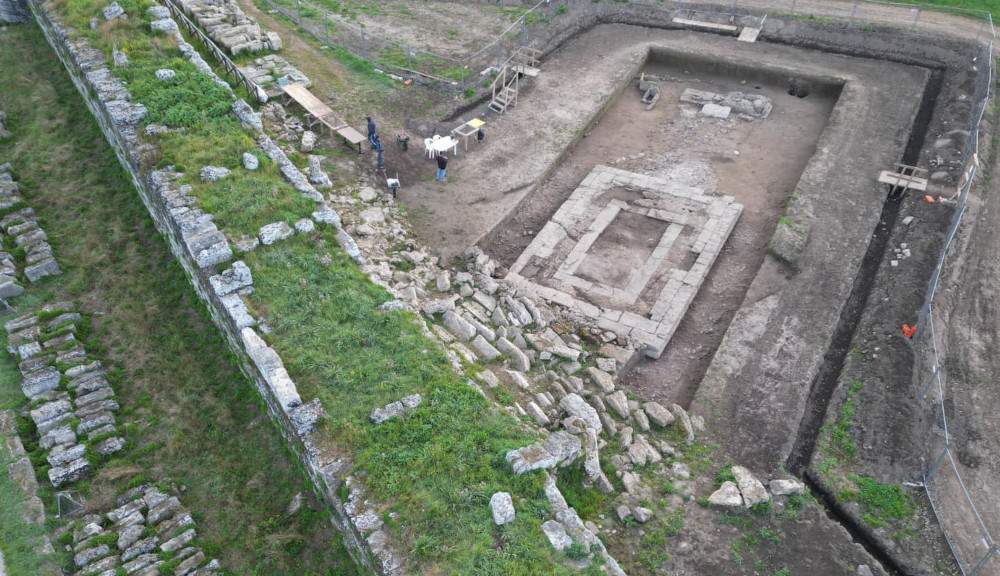Paestum reveals new discoveries: hundreds of votive offerings, statues and altars found in Doric temple
Paestum Archaeological Park is revealing big surprises as work is underway to unearth the Doric temple unearthed in 2019 along the ancient city’s west wall.
The temple’s stone plinth and cella that housed the statue of the deity, painted terracotta roof decorations with lion-shaped drips, an extraordinary gorgon, and an Aphrodite have all been unearthed. And also seven bull’s heads, thealtar with the fluted stone to collect the liquids of sacrifices, and hundreds of votive offerings, among which stand out an Eros riding a dolphin that imagination might refer to the mythical Poseidon, the god who gave the city its name. As Park Director Tiziana D’Angelo toldAnsa, it is “an excavation that promises to change the known history of ancient Poseidonia.” “Every day is a surprise,” the director expresses with satisfaction.
“The discovery of hundreds of votive offerings, statues and altars in the Paestum temple confirms the extraordinary value of this site and its great potential on which we are working,” said Culture Minister January Sangiuliano. “A little over a month ago I went to Paestum precisely to check on the state of the archaeological park and understand all that can be done, including in terms of funding, to strengthen conservation and development activities in the area. Every excavation that brings to light historical evidence of the past demonstrates the immense wealth of our nation’s archaeological heritage of which there is still much to discover.”
Excavations were started in 2020, stalled due to the pandemic, and have now resumed a few months ago. “What we are facing today is the moment when the sanctuary, for reasons yet to be clarified, was abandoned, between the end of the second and the beginning of the first century B.C.,” D’Angelo explained to Ansa.
Analysis of the clay decorations has allowed the foundation to be dated to the first quarter of the 5th century BC, when some of the most important monumental buildings that have come down to us had already been built in the Greek colony. Very small in size, presenting four columns on the front and seven on the sides, the small temple is like the others in the Doric style, but is distinguished by its purity of form. It is the “smallest peripteral Doric temple that we know of before the Hellenistic age, the first building in Paestum that fully expresses the Doric canon,” explained former Paestum Archaeological Park director Gabriel Zuchtriegel.
Many objects have been found in the space dividing the front of the building from the altar, erected outside: terracotta figurines with the faces of offerers or those of deities, as many as fifteen depicting little Eros riding a dolphin, miniature temples and altars. These are in addition to the seven bull heads found around the altar. On one of the dolphin figurines is also the signature of “a family of potters of Lazio origin, also known in Delos, whose presence here in Paestum had never been documented,” says director D’Angelo.
Asked by Ansa about the possibility of this being the temple named after the god who gave the city its name, the director replies, “It is still early to say, but the hypothesis is extremely interesting. Just a suggestion, then. Waiting for excavations to turn on new lights on the story.”
 |
| Paestum reveals new discoveries: hundreds of votive offerings, statues and altars found in Doric temple |
Warning: the translation into English of the original Italian article was created using automatic tools. We undertake to review all articles, but we do not guarantee the total absence of inaccuracies in the translation due to the program. You can find the original by clicking on the ITA button. If you find any mistake,please contact us.





























